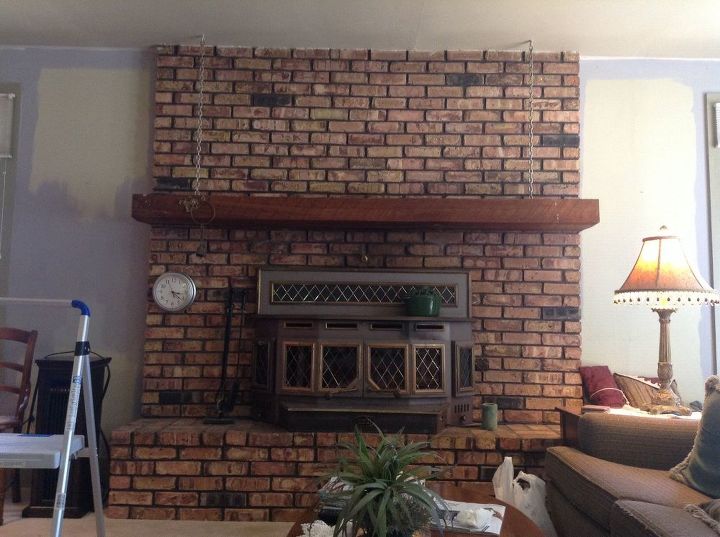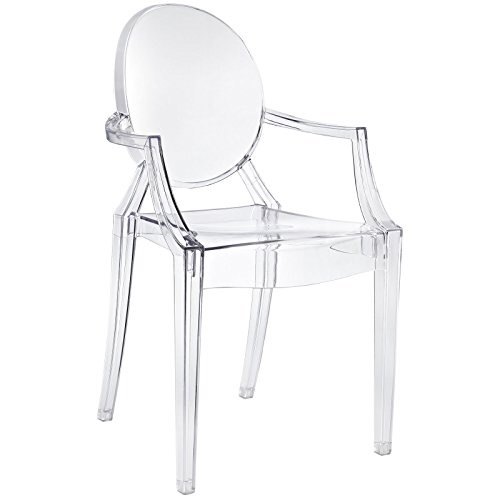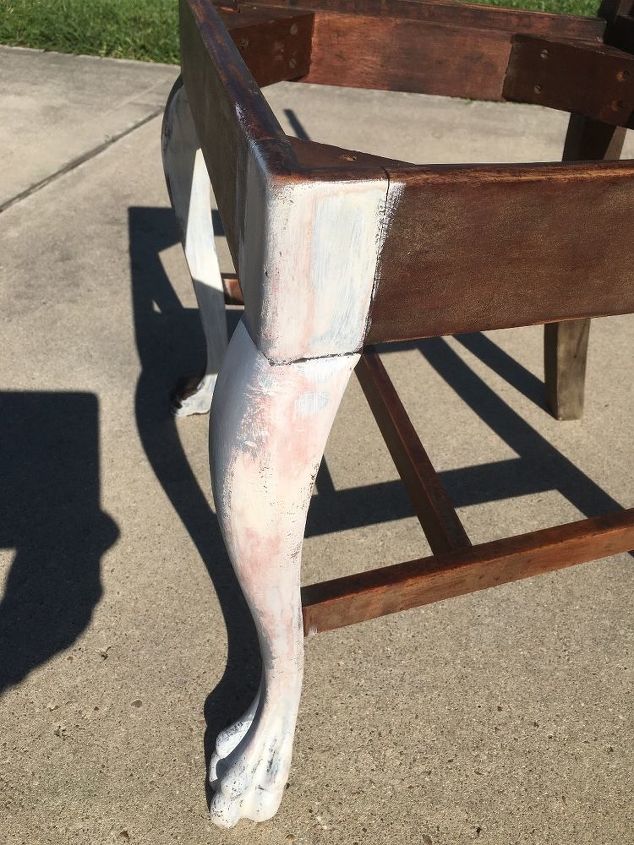Painting antique chairs

-
If you do not remove the rest of the stain it will bleed through the paint.You should use a wood filler on whatever is broken and lightly sand.As for the painting aspect that will depend on your sense of style.
 Janet Pizaro
on Oct 02, 2015
Helpful Reply
Janet Pizaro
on Oct 02, 2015
Helpful Reply -
-
I would sand till the loose edges of the veneer are smooth then use a good quality latex primer like Kilz or Glidden. If the stain is going to bleed through you will see it. There are a few types of old finishes where the stain bleeds through but the majority don't. After the primer select a quality paint and go for it!
 Kathy Owen | Petticoat Junktion
on Oct 02, 2015
Helpful Reply
Kathy Owen | Petticoat Junktion
on Oct 02, 2015
Helpful Reply -
-
How you address the broken veneer depends on how many places are broken and their size. If the broken veneer has left large or deep "holes," it might be easier to use a wood filler rather than trying to sand it smooth. If the broken veneer is small, some additional sanding might be enough to smooth it out. In most cases, it is not necessary to completely remove the stain before painting. More than likely, if you have sanded off enough of the stain, you probably won't have a bleed-through problem. Actually, since stain soaks into the wood, it is often almost impossible to remove every trace of stain from the grain of the wood without A LOT of work. Chances are, you probably don't need to go to that much trouble just on the slim chance the remaining stain will bleed. As Kathy said, most finishes don't bleed. From my experience, it is usually furniture from the 30s and 40s with that reddish, mahogany looking stain that bleeds and a good stain blocking primer (or a coat of shellac) will prevent it. There are lots of options for paint. Depending on what look you are going for, you can use latex interior paint (my favorite paint for furniture), chalk paint or milk paint.
 Shari
on Oct 02, 2015
Helpful Reply
Shari
on Oct 02, 2015
Helpful Reply -
-
Everyone has given you good advice. I have just a comment about the stain bleeding through. First do the proper prep with wood filler and sanding. Then you can prevent stain from bleeding through by using a stain blocking primer like Kilz Premium or Zinsser 123 Stain Blocker. Use 2 coats of this primer and then use any paint you want.
 Debi53
on Oct 02, 2015
Helpful Reply
Debi53
on Oct 02, 2015
Helpful Reply -
-
I helped a friend transform a 90's bed & breakfast to a "shabby chic" wedding venue, which involved painting a LOT of furniture! (and kitchen cabinets, and floors, etc.) I had a table and 6 chairs in about the shape you're describing. I sanded and used wood filler where there were holes or chips, just to keep things smooth - and I used chalk paint to paint the pieces. The table was that horrible 50's faux wood paint finish - and it looked really yellow and blech - and had a LOT of stain. 2 coats later and none of it bled through.
 CAmom
on Oct 02, 2015
Helpful Reply
CAmom
on Oct 02, 2015
Helpful Reply -
-
All this info has really helped. One last question: Once painted do I need to paint w/acrylic finish to protect chipping??? My Kitchen cabinets were painted by previous owners but did not put protective type finish and now I have problem w/chips.
 Martha Partridge
on Oct 02, 2015
Helpful Reply
Martha Partridge
on Oct 02, 2015
Helpful Reply -
-
You can replace veneer with new, purchased at a wood crafts store. Cut it with a very sharp craft knife and glue it in place. Stain to match. Since any value they might have had as antiques was removed as soon as they were sanded, a good paint in the finish of your choice is now your best option. There were no pictures, but a black lacquer might help retain the "old and elegant".
 Lainey Howell
on Oct 05, 2015
Helpful Reply
Lainey Howell
on Oct 05, 2015
Helpful Reply -
-
Thanks for the info Lainey Howell.
 Martha Partridge
on Oct 05, 2015
Helpful Reply
Martha Partridge
on Oct 05, 2015
Helpful Reply -
Related Discussions
Should I paint or stain my oak kitchen cabinets?
I was wondering if you could help me with something -- I have an entirely oak kitchen. I know it's the rage now to paint or gel stain cabinets. I've been considering ... See more
How to paint a metal front door?
How do I paint my front door? It's metal.
How to paint grout?
How do I paint grout to change the color? The grout is in great shape, but the color - meh.
How to whitewash a brick fireplace?
What is the best method to whitewash bricks surrounding a fireplace?
I need help painting an acrylic chair!
Hi. I was hoping someone could help me. My client wants to use this chair for her daughter's bat mitzvah. I'm going to paint the back of the chair using acrylic paint... See more
I painted some antique chairs white and they turned pink even through
i sanded and primed with Zinsser Primer before painting. I believe the wood is from the depression. It is very soft. It turns pink even with gray paint. Any suggesti... See more




